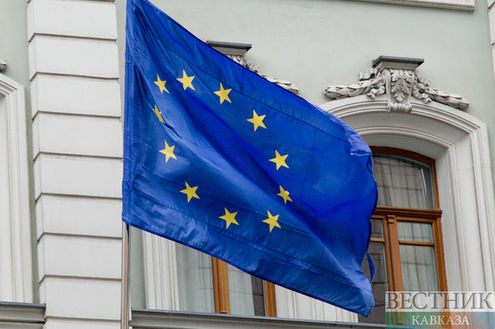The possible visit of Russian Prime Minister Dmitry Medvedev to the Kuril Islands will not be a deciding factor in planning the visits of the leaders of the two countries to Russia and Japan. This was stated by the third secretary of the Third Department of Asian Affairs of the Russian Ministry of Foreign Affairs, Denis Karenin, at a press conference at Tass dedicated to the 70th anniversary of the start of the operation to free the Kuril Islands from Japanese troops during World War II.
A few days ago, Japanese Prime Minister Shinzo Abe spoke about the sincere remorse felt by Japan in a statement on the occasion of the 70th anniversary of World War II. He also apologised to the world community, especially to Japan's Asian neighbors, for the actions of the Japanese government at that time. Shinzo Abe also underlined that the post-war generation of the country do not have to bear the burden of infinite guilt for the actions of the Japanese army.
Speaking on the events of those years, Candidate of historical science, professor of the Academy of Military Sciences, Yuri Nikiforov said that The Soviet leadership had no assurance that Japan would refrain from attacking the Soviet Union at the appropriate moment , "Stalin had to keep considerable forces in the Far East, dozens of divisions and hundreds of aircraft and tanks during the war with Hitler. These forces could have been very useful for our troops in Moscow in 1941, and in Stalingrad in 1942, and in Leningrad, and certainly could have facilitated and helped our people to avoid the enormous sacrifices and monstrous tension of forces in the war against Nazi Germany. But this passive, in this case we are talking about an absence of open military armed confrontation between the USSR and Japan, this passive assistance to the creation of a permanent looming threat of attack from the East on Soviet territory in front of the Kremlin, certainly helped Hitler in implementing his expansionist plans to defeat the Soviet Union."
According to Nikiforov, the Americans were very interested in the Soviet Union helping them in the war, and throughout the war, even in 1941, US President Roosevelt actually suggested to Stalin: "Let you, after the Pearl Harbor attack, let the Soviet Union, too, join this war. And let you allow us to place our US bases.’’ In order not to provoke Japan into open armed uprisings against the Soviet Union, Stalin for the time shied away from any positive action, from any positive decision, in answer to these US proposals
Nevertheless, in Tehran in 1943 and then in Yalta in 1945, the parties came to a definite agreement: the Soviet Union committed itself to enter the war against Japan, and did so three months after the surrender of Nazi Germany. This was done because it was in the interests of our country to return South Sakhalin and further to carry out a landing on the Kuril Islands. This landing began on August 18 at about five o'clock in the morning, the landing operation began, the invasion of the Kuril Islands, which ended with the final surrender of the Japanese troops on September 1. Since the US plan was the creation of a possible aircraft naval base on one of the Kuril Islands, as Truman had repeatedly said and suggested to Stalin in the summer of 1945, asking to change the terms of the Yalta Agreement in this regard. There was, of course, a purely military necessity to do so, so the Japanese troops on the Kuril Islands surrendered to the Soviet Union ", Nikiforov said.
According to him, natural result of the actions of the USSR, not only these, the efforts of all the anti-Hitler coalition, was the surrender of Japan, which was officially signed on September 2. But a kind of prologue and the main events on this journey were, of course, the Soviet entry into the war on August 8, and then a series of operations, including the Kuril landing, which provided legal confirmation of the Kuril Islands as a part of the USSR after the war.






